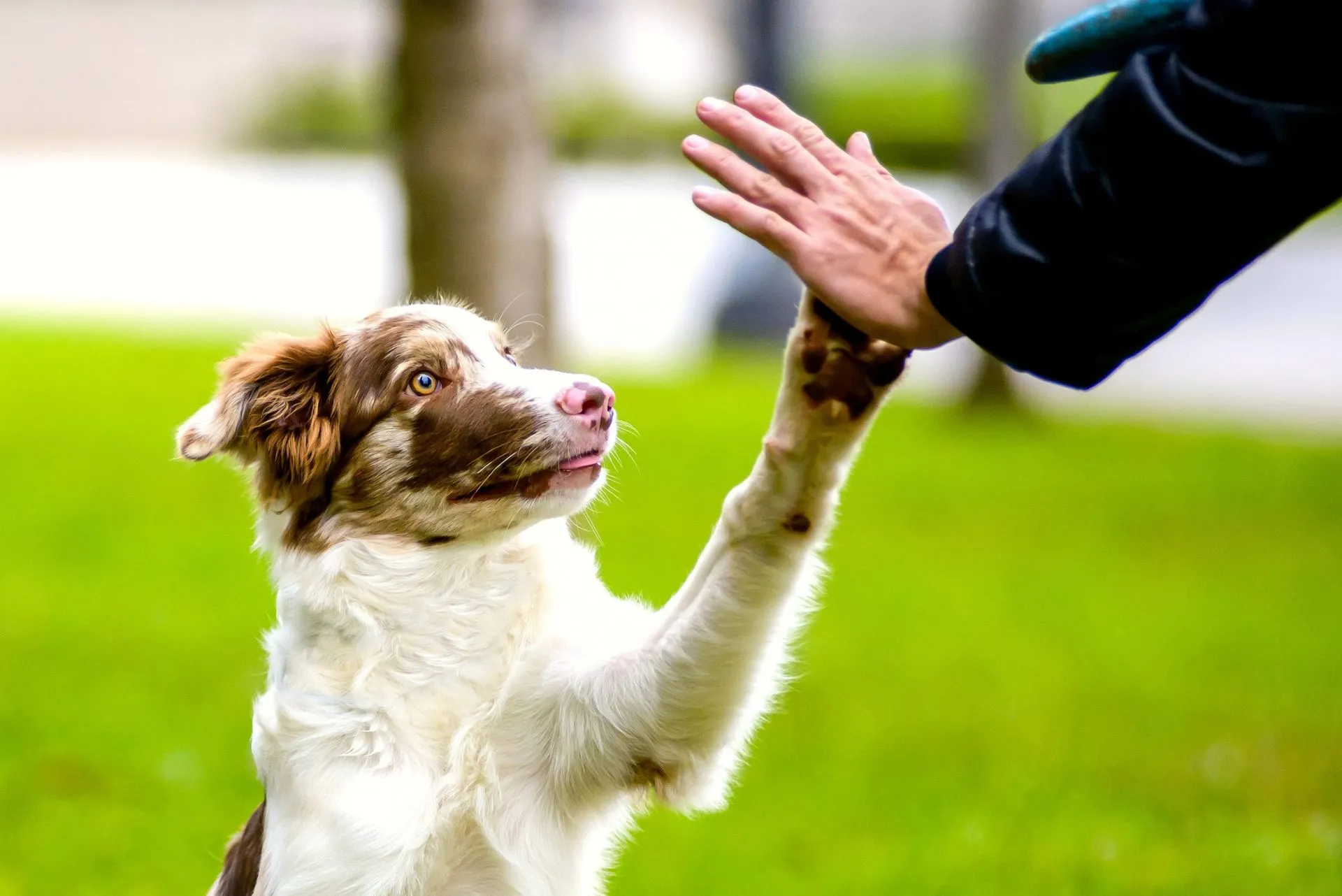Want to impress your friends and family with a dog that knows a few cool tricks? It’s a fun goal, but before you start dreaming of a canine circus act, it’s important to build a solid foundation. This guide will walk you through the Best Way To Teach A Dog Tricks, ensuring a positive and rewarding experience for both you and your furry friend.
 Not the tricks we’re aiming for.
Not the tricks we’re aiming for.
1. Lay the Groundwork: Obedience Training First
Before you even think about teaching your dog to roll over, ensure they have mastered basic obedience commands. Think of it like this: you wouldn’t try to teach a child algebra before they know their numbers. Basic commands like sit, stay, come, and down are essential. A well-behaved dog is a happy dog, and mastering these commands will make learning tricks much easier. It also demonstrates respect for your dog by ensuring their fundamental training needs are met before moving onto more advanced, less essential skills.
It’s a common mistake to jump straight into tricks without having a solid foundation of basic obedience. Imagine spending hours teaching your dog to wave its paw, only to find it ignores you when you ask it to sit or stay. The basics are what matter most.
2. Impressive Training Includes the Basics
What’s more impressive: a dog who can do a complex trick on command, or a dog who calmly waits for your cue before eating? The latter demonstrates a level of control and understanding that is truly remarkable. Integrating useful commands into your daily routine is a more impressive way to improve the lives of you and your dog.
Consider these impressive alternatives:
- A dog who understands and responds to the leave command, resisting the temptation to grab food off the counter.
- A dog who walks to heel politely on a leash, making walks a pleasure instead of a chore.
- A dog who doesn’t bother barking at the door when someone approaches the house.
These skills are far more valuable and demonstrate a deeper level of training than any party trick. Remember, the goal isn’t just to impress, but to improve your dog’s quality of life.
3. Make it a Game: Memory Retrieve
Turn training into a fun game with memory retrieve exercises. Take your dog’s favorite toys and hide them around the house, in the garden, or even on a walk. Then, challenge them to find them. This is a fantastic way to stimulate their mind and engage their sense of smell.

The mental stimulation that comes from this activity helps to improve your dog’s mental wellbeing. Visitors will be far more impressed to witness your dog “go find teddy” than watch it walk on its hind legs for a few seconds.
4. Mastering Recall: The Ultimate Trick
While teaching a dog to shake hands or roll over is entertaining, the ability to recall your dog is the most important and often the most challenging “trick” to master. A dog who is off-leash and spots something exciting can be completely consumed by instinct. Being able to break through that focus and have them return to you is a true testament to your training.
This trick builds:
- Trust: Your dog learns to trust that coming back to you is always the best option.
- Safety: Reliable recall can keep your dog safe in potentially dangerous situations.
- Bond: Strengthening the bond between you and your dog.
The coolest tricks are often the life commands that enhance your dog’s safety and well-being.
5. Fun Time
Once you’ve established a solid foundation of obedience and mastered essential commands, it’s time to have some fun! If your dog enjoys interacting and learning, you can introduce a variety of tricks.
Some great tricks include:
- Shaking hands: A classic and simple trick to start with.
- Rolling over: A fun trick that requires a bit more coordination.
- Playing catch: Great for exercise and bonding.
- Crawling on their belly: A cute and entertaining trick.
- Playing hide-and-seek: An engaging game that stimulates their mind.
Remember, the key is to keep it positive and enjoyable for both you and your dog. If you’re both having a good time, learning will be much easier and more rewarding. Don’t forget to check out this list of dog tricks and commands for more ideas!

Remember, a well-trained dog is a happy dog, and with a little patience and consistency, you can teach your furry friend a variety of fun and impressive tricks.
6. Positive Reinforcement
Positive reinforcement is the cornerstone of effective dog training. This means rewarding your dog for desired behaviors with treats, praise, or toys. Avoid punishment, as it can create fear and anxiety, hindering the learning process.
Positive reinforcement includes:
- Treats: Small, tasty treats are a great motivator.
- Praise: Enthusiastic verbal praise can be just as rewarding.
- Toys: Use a favorite toy as a reward during training sessions.
- Affection: A gentle pat or cuddle can also be a positive reinforcement.
By focusing on rewarding good behavior, you create a positive association with training, making it a more enjoyable experience for your dog. This helps to strengthen the bond with your dog. Remember to keep training sessions short and fun, ending on a positive note.
Conclusion
Teaching your dog tricks can be a rewarding experience, but it’s essential to approach it with the right mindset. Before you focus on entertaining party tricks, prioritize basic obedience and life commands. This ensures a well-behaved and happy dog, while also strengthening your bond. Remember to keep training positive, fun, and tailored to your dog’s individual personality and abilities. With patience, consistency, and a focus on positive reinforcement, you can unlock your dog’s potential.
